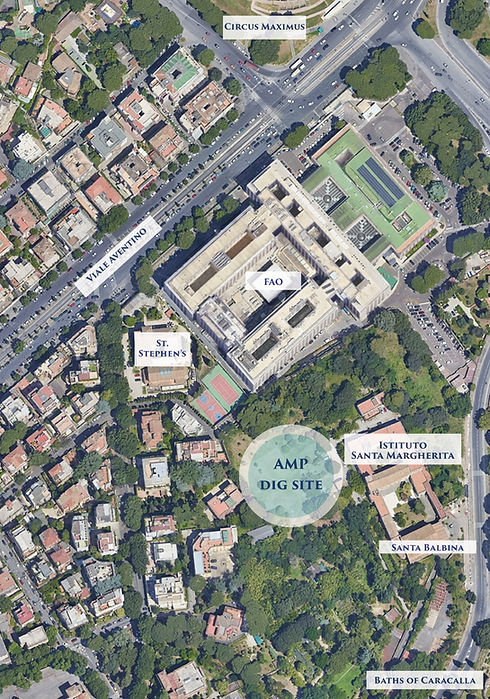AMP engages both the local high school students at St. Stephen’s School and the undergraduate and graduate students at The American University of Rome in archaeological research, excavation, conservation, and publication using pedagogical methods of experiential learning and project management.
About
The Location

"AMP is a 'large tent' project, and we want to get the entire community involved in discovering their own cultural heritage in a way that not many digs are able to do."
Elizabeth Wueste,
Director of the Aventinus Minor Project
The Aventinus Minor Project is located in an understudied area of the Piccolo Aventino (Little Aventine) in Rome’s modern San Saba neighborhood.
This open green field is located between the Circus Maximus and the Baths of Caracalla, and is owned by the Instituto Santa Margherita, a Catholic convalescent home housed in the monastery of Santa Balbina church.
There may be an intact stratigraphy sequence from modern day back to Rome’s foundation in 8th century BCE. Early cartographic and topographic work indicates that the area contains a portion of the Republican Servian Wall, as well as an Imperial house belonging to Lucius Fabius Cilo, consul in 193 and 204 CE.

Get involved!


